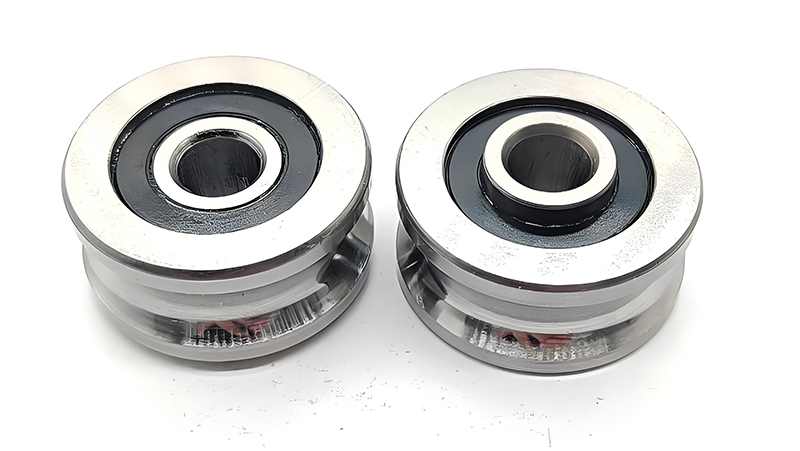In modern agricultural machinery, conveyor systems and light transportation equipment, U-groove bearings, as a specially designed bearing, have become a key component due to their compact structure and easy mounting. Due to their wide range of sizes, groove designs and materials, improper selection can lead to system failures, high maintenance costs and unnecessary downtime. This guide will provide a comprehensive overview of U-Groove bearings, including their types, applications, size specifications, and how to select a reliable supplier like FRSZC.

Contents
U-groove bearings, also known as U-groove track bearings, are precision components with a concave U-groove on the outer ring. This design allows them to run smoothly along rails, cables or cylindrical guides. Compared with traditional bearings, U-groove bearings can work reliably in tight spaces and can withstand radial and axial loads, and are widely used in agriculture, packaging, food processing and other industries.
With a basic understanding of U Groove Bearings, let’s explore their types, applications, how to choose the right size, and why FRSZC is a trusted supplier worldwide.
Universal joint bearings (U-joint bearings) and U-groove bearings (U-groove bearings) have very different functions, although their names are often confused. Universal joint bearings, also known as cardan joint bearings, are coupling components used to transmit torque, usually in the shape of a cross or “X”, and are commonly found in vehicle drivelines.
In contrast, U-slot bearings are ball or roller bearings that are primarily used to guide motion along rails or steel cables and are commonly found in linear systems, for example. cable or rail guided systems:
– Cable or rail guided systems
– Pulley blocks
– Automated conveyors
– Sliding door and window mechanisms
Despite the similarity in name, they are completely different in construction and function. If you are not sure which type of bearing is required, it is recommended to specify the application scenario or provide a drawing of the equipment so that the supplier or technician can assist in identifying it.
Based on function and structure, bearings can be categorized into four main types:
1. **ROLLING BEARINGS**: Rolling bearings utilize balls or rollers to roll between the inner and outer rings, dramatically reducing friction. These are the most common and widely used bearings in industrial applications, offering excellent speed performance and load carrying capacity. u-slot bearings are a type of rolling bearing with a u-slot outer ring, often based on deep groove ball bearings or angular contact bearings designed to guide cables, rails or pulleys in linear motion systems.
2. **Plain bearings**: Plain bearings do not rely on rolling elements, but transmit motion by direct sliding between the shaft and the housing. Their simple structure and low cost make them suitable for low speeds, light loads or well-lubricated working conditions, but not for high speeds or heavy loads.
3. **Thrust bearings**: Thrust bearings are designed to withstand axial loads (forces along the axis) and are commonly found in rotary tables, rotating tables and vertical motors. They are available in ball or roller designs depending on the type of load.
4. **Sleeve bearings (bushings)**: These cylindrical bearings are made of metal, composite material or plastic and are mounted in a bore to support the rotating shaft. They are compact and suitable for low-speed applications where space is limited, such as household appliances, small motors and printers.
U-groove bearings are used to guide motion along circular tracks, rails or steel cables. The U-groove provides stable engagement and prevents slippage or derailment.
Common applications include:
– Conveyor systems
– Cable-driven lifts and cranes
– Sliding and rolling doors
– CNC machine tools and robots
– Pulley systems in fitness equipment
– Packaging and bottling lines
– Curtain or door guides
In industrial automation systems, U-groove bearings help reduce wear on guiding components, reduce vibration and enhance motion control.
Selecting the right size U-channel bearing ensures a good fit, maximum load carrying capacity and long service life.
Key sizing parameters include:
– Inside diameter (ID): the shaft diameter that the bearing fits into
– Outside diameter (OD): affects overall load carrying capacity and compatibility with the frame.
– Groove width and depth: must match the diameter of the rail, cable or track
– Material: chrome steel for heavy loads, stainless steel for corrosion-resistant environments, polymer for low-noise environments
– Sealing: In dusty or humid environments, sealed (2RS) bearings are recommended to prevent contamination.